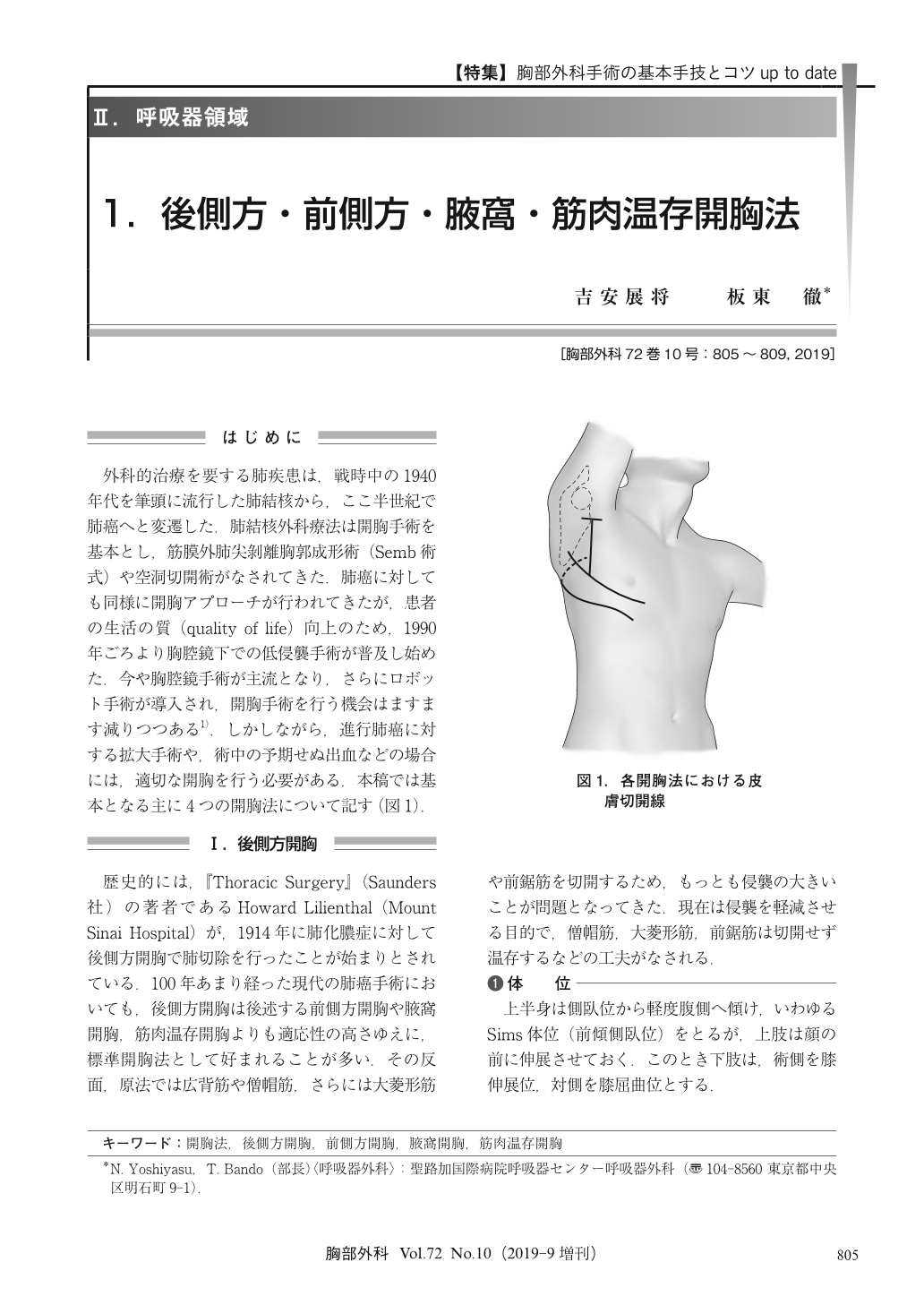Japanese
English
- 有料閲覧
- Abstract 文献概要
- 1ページ目 Look Inside
- 参考文献 Reference
外科的治療を要する肺疾患は,戦時中の1940年代を筆頭に流行した肺結核から,ここ半世紀で肺癌へと変遷した.肺結核外科療法は開胸手術を基本とし,筋膜外肺尖剝離胸郭成形術(Semb術式)や空洞切開術がなされてきた.肺癌に対しても同様に開胸アプローチが行われてきたが,患者の生活の質(quality of life)向上のため,1990年ごろより胸腔鏡下での低侵襲手術が普及し始めた.今や胸腔鏡手術が主流となり,さらにロボット手術が導入され,開胸手術を行う機会はますます減りつつある1).しかしながら,進行肺癌に対する拡大手術や,術中の予期せぬ出血などの場合には,適切な開胸を行う必要がある.本稿では基本となる主に4つの開胸法について記す(図1).
Lung disease requiring surgical treatment has shifted from pulmonary tuberculosis that was prevalent in the 1940s during wartime to lung cancer in the last half century. The surgical approach for pulmonary tuberculosis was open chest surgery. Likewise for lung cancer, a thoracotomy approach had initially been used for a while. Thoracoscopic minimally invasive surgery became more widely used around 1990 and was shown to improve the patient’s quality of life (QOL). Currently, thoracoscopic surgery and robotic surgery are the mainstream procedures for patients with lung cancer, and thoracotomy procedures have fallen out of favor. However, in some cases of unexpected bleeding from the pulmonary artery or tumor infiltration into the pulmonary artery, appropriate thoracotomy must be performed. In this volume, 4 representative methods of performing thoracotomy are described with some tips in Japanese.

© Nankodo Co., Ltd., 2019


